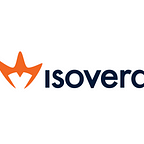How Beyonce (Unwittingly) Made Accessibility the Latest Big Web Trend
Anyone obsessed with Beyonce could tell you that while she may be irreplaceable, her website is not. That’s because a recent lawsuit filed against Queen Bey & her production company claims that the website violates the Americans With Disabilities Act by failing to accommodate visually impaired users.
And her website is not alone when it comes to inaccessibility. In 2018 over 10,000 organizations had federal lawsuits filed against them for inaccessible sites — a 33% increase from 2017 and a number that’s expected to rise in 2019!
So, caring about Beyonce and web accessibility, like any good web-obsessed agency is apt to do, the Isovera team took one of our favorite web accessibility testing tools (shoutout to the WAVE evaluation tool!) and tested out Beyonce’s website for ourselves.
The Result: Poor ranking
By running Beyonce’s homepage in the WAVE accessibility testing tool, we identified eight outright inaccessible elements and nine additional alerts that there were elements to be aware of.
The Culprits…
Ultimately, there were a few elements that Beyonce’s site was particularly bad with: alternative text, form labels, and buttons.
Missing alt text (alternative text that describes what a webpage image is of), which is bad because it means that screen readers don’t dictate to users what an image is of, which drastically alters the experience a user has with a site.
Missing form labels (forms that don’t include labels to what they are or what they should be filled with), which is bad because if forms aren’t labeled, screen readers won’t read what should be in forms, and vision impaired users won’t know there are forms on a site to be filled out or where to input their data for forms.
Having empty buttons (or, as you probably guessed, buttons that don’t contain anything) is bad because screen readers aren’t able to tell that there’s a button, and therefore won’t alert users that there is something that can be accessed.
Each of these missing elements contributes to inaccessibility and makes it so that users with impairments or disabilities have a poorer experience with the website than users without — or can’t access the website at all!
What’s Next:
While Beyonce has millions to help her with ADA violation costs, most web property managers don’t, so they should be especially aware of any inaccessibility issues. Inaccessibility at best excludes potential users from accessing a site, and at worse leaves site owners vulnerable to fines and lawsuits of upwards of millions of dollars.
On the converse side, designing a website with accessibility in mind means that you build with best practices. This means including things like keyword context, alternative text, and strong web content — all elements which can actually boost a site’s ranking and reach through benefits like improved SEO or the ability for devices such as Alexa and Google Home to access a site. Larger reach can mean more leads (and conversions!), making web accessibility a double whammy win!
To keep yourself accessible, our team at Isovera recommends that you try running your own website into the WAVE Accessibility Checker. Visit https://wave.webaim.org/, and enter in the URLs of your webpages.
- If the tool identifies 0 areas of your site to be inaccessible, phew — you’re in the clear for now (though accessibility is a growing concern, so it’s probably a wise choice to check in on your web pages every so often — especially if you have a lot of content changes being made!).
- If the tool identifies several areas of your site to be inaccessible, it’s probably a good time to dust off the code in your site, or to find a developer who can help you tweak your site to make it more accessible.
- If the tool identifies LOTS of accessibility issues, or if you know you’re due for a redesign (maybe your site is unresponsive, or it’s been many, many years since its last renovation), you might want to invest in a site refresh or an entirely new site. This can often mean hiring a web development & design agency — these agency folks should help you to scope out how to build an accessible site, discover what you want your site to enable you to do, and understand how to create a website that works as a business tool — from providing useful insights to visitors, to generating sales.
Now What?
This article was originally published by Maggie Newberg on the Isovera website. Interested in reading more about web accessibility? Check out their recent accessibility articles here!
